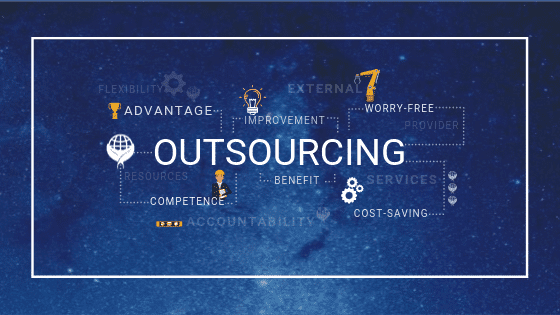Predictive. Proactive. Intelligent. If you did a poll, it’s not likely these attributes would automatically be associated with facilities engineering efforts. In fact, facilities engineering is one of those areas few fully appreciate or understand—until they have to. That is…until the HVAC dies and a significant investment for an upgrade is needed. Or until a leak occurs and the manufacturing line is sidelined for days. Or the building’s bathrooms are off limits. No surprise, it’s in the throes of a crisis when the glare of the spotlight burns.
Of course, there are solutions, including a close working partnership between your company and a trusted resource qualified to tackle the full suite of responsibilities that facilities engineering entails, from the strategic to the everyday. The reasons why organizations of all size are forging partnerships and outsourcing all or part of their facilities engineering and management efforts vary—here’s a look.
A Proactive Mindset—On All Fronts
When you ask in-house facilities engineers, what is the one thing they’d like to change, “I wish I had known…(fill in the blank)” is the most common reply. I wish I had known the HVAC was on its last days… that the new replacement unit would exceed my annual budget for all equipment… that the pipes were compromised…that the system failure would shut us down for days… that my new hire didn’t really have the expertise he claimed he did. Flawless execution and mitigating risk doesn’t just occur—it requires planning, systems and process know-how, and an in-depth understanding of the intricacies of managing both equipment and engineers.
With facilities equipment and maintenance tallying as one of an organization’s highest costs—talent/salaries rank highest—predictability and improved certainty matter, a lot. It matters on the planning and financing front for major capital equipment investments; it matters because interruptions due to equipment failures are costly, both in terms of output and morale; it matters because assigning the right resource with the right expertise can be the difference between success and failure.
Often, it feels like we’re jumping from one urgent issue to the next, with no time in between; we’re reactive instead of proactive. We know stepping back and planning is important, but finding the time to do that can be challenging. With an outsourced facilities engineering resource as your partner, both the strategic planning and the day-to-day orchestration can be addressed, without trade-offs.
- Sound Investments, Smarter Planning – Based on the high cost of equipment, long-term planning on purchasing and adoption of new systems is critical. This is a key area where your outsourcing partner can assist, from detailed specs on equipment options and an objective assessment based on hands-on experience with different vendors to long-term strategies for migrating to new platforms with an eye toward minimal downtime and disruption.
A major benefit of utilizing outsourced facilities engineering services includes shifting contractor costs to a planned, structured payment plan, allowing for more pro-active budgeting and more in-depth investment and ROI discussions. At the same time, together you can map out a more strategic approach to planning, including factoring in the total cost of ownership of your facility assets. With deep expertise and exposure to a range of solutions and systems—but still independent in their opinions and assessments—your outsourced facilities engineering partner can recommend capital expenditures with an eye toward measurable long-term savings. Because they are your advocate, not the manufacturers’, this independent assessment can prove invaluable.
- Build a Deeper Bench—All While Lowering Staffing Costs – Gone are the days where one facilities engineer can tackle the range of system and equipment challenges—today’s equipment is too complex for any one individual to have the deep technical expertise required. With an outsourcing partner, you gain ready access to team members with exacting skills (a valve expert or a Pneumatic controls expert, for example), just when that expertise is needed. With today’s tight job market, simply finding and hiring talent can be onerous.
Negotiated outsourced service provider billing rates are often lower than the total cost of full-time employees when all employee overhead costs are factored in (including benefits, office space and equipment.) With a deeper bench of expertise accessible, balancing between in-house generalists and outsourced specialists and ensuring the right professional is assigned from the start can help keep costs in-check and ultimately drive better results.
- Elevate the Ordinary – Equipment failures or outages aren’t a matter of if, but when. They will occur, which makes having a clearer handle on the “when” absolutely critical. A core benefit of relying on an outside trusted resource for managing ongoing maintenance, system upgrades and repairs is careful tracking of these issues. The team documents details not only about your equipment, but is also privy to issues that their other customers face with that same or similar equipment, providing a better “read” on where break points often occur. Best of all, they bring that intelligence to you and your team. At the same time, when your outsourced facilities engineering partner oversees maintenance and repair work, organizations can also reduce staffing levels and payroll/benefits costs.
Other routine aspects of facilities engineering, including staying on top of code changes is vital, but can be challenging to do especially if you operate in different states (and even different countries). With an outsourced service partner, these routine but important tasks can be offloaded—and executed without fail.
- Stay Sharp, Stay Ready – A continuous improvement mindset is a smart way of working, but it’s not always an easy goal to achieve, especially when juggling day to day priorities. Linking your outsourcing partner’s services and reporting to continuous improvement markers and working together to tackle issues is a proven strategy. Different markers can be considered—from metrics around response time to employee requests to setting up and following routine maintenance schedules and record keeping. At the same time, other important processes can be included in the mix, including documentation and implementation of training to keep up with environmental, human resource and safety requirements, as well as emergency response training and procedures.
The old adage of “own versus rent”—of a build your own team versus working with an outsource partner—is often used when evaluating the pros and cons of shifting to an outsourced facilities engineering model. Too often, that framework is viewed as an all or nothing move, a binary decision. Increasingly, however, organizations are exploring a hybrid model by keeping some elements in-house and others entrusted to an outsource partner allowing that organization to focus on their core business. It’s a model that works in the near-term and often provides added insights into the value an outsource partner delivers. Regardless of the approach you pursue, the approach requires a partnership mindset and like all strong, sustained relationships is built on open communication and trust.





